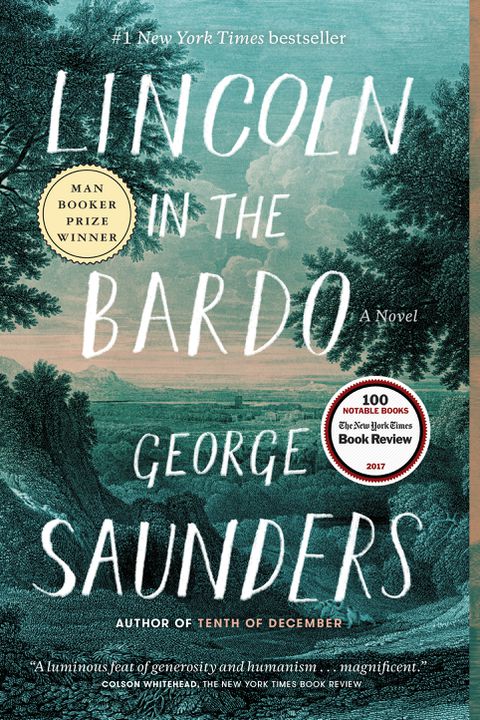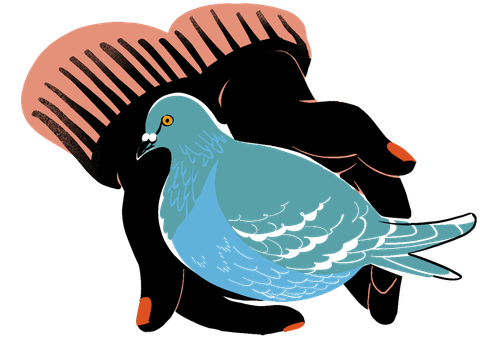One year ago, the coronavirus was already in Washington, but most people hadn’t yet experienced significant disruption to their daily lives. How naive we were.
Through the quarantines and stay-at-home orders, with restaurants closed, theaters dark and treasures locked up tight in museums, what some of us miss most is the spirit of city — D.C., not Washington — in all its wonderful, unpredictable, maddening glory.
One of the easiest ways to recapture those missing experiences is through literature, so we asked a spectrum of authors, librarians, booksellers and book critics to tell us about their favorite book written about D.C. — one that captures the essence of D.C., reminds readers how special living here can be, or shows a side of the nation’s capital that outsiders often miss.
Even the most jaded of book lovers should find a surprise in these recommendations. All but one are in print, which means you can find them on library shelves or order a copy from your local independent bookstore. After all, we want our neighborhood shops to be able to introduce us to the next great Washington novel.
Responses have been lightly edited for length.

“Heartburn” by Nora Ephron
 (Vintage)
(Vintage) If you’re invited to a dinner party in Washington, chances are you’ll be seated by someone connected to journalism or politics. It’s true today — and it was true in 1983, when Nora Ephron’s watershed “Heartburn” was published. Writing a laugh-out-loud novel about the dissolution of a marriage because of infidelity seems counterintuitive, but Ephron, whose divorce from Carl Bernstein is widely considered to be her source material, succeeds brilliantly. Her observations about D.C. and the characters who populate it seem nearly as fresh today as when she penned them. A bonus: Woven throughout the chapters are recipes, including a delicious-sounding one for key lime pie. There’s also some diabolical inspiration on what to do with it, if you like your revenge served up sweet.
— Sarah Pekkanen, whose books include “The Wife Between Us” and “You Are Not Alone”
Ephron’s 1983 roman à clef remains more compulsively readable than any political thriller. It contains no intrigue beyond some credit-card snooping, no world crisis greater than the battle to make truly crisp hash-browns, no power struggle other than that between a couple whose marriage is about to explode, but read the first page and I promise you won’t be able to stop. Ephron describes her heartbreak in the nation’s capital with such sharp wit and endless charm that D.C. readers will feel proud to have once been able to call her a Washingtonian. It’s a bittersweet thought, though, because I can’t help thinking that 2020 would have been at least a little easier if we’d had Nora Ephron to see it through with us.
— Katherine Heiny, author of the upcoming “Early Morning Riser”

“You Can’t Take a Balloon into the National Gallery” by Jacqueline Preiss Weitzman and Robin Preiss Glasser (illustrations)
 (Robin Preiss Glasser)
(Robin Preiss Glasser) While a grandma is giving her grandchildren a tour of the museum, their red balloon — left tethered outside — slips its moorings and blows recklessly through the city, offering us a gloriously playful look at some of D.C.’s most iconic sights. It also gives us glimpses of some of the famous women and men (Ben Franklin, Abe Lincoln, Eleanor Roosevelt and many others) who have contributed to Washington’s rich history. Back at the museum, we are treated to meticulously rendered works of art by the likes of Winslow Homer, Matisse and Manet. Full of fun, and painlessly educational, every place and person and painting is a pleasure to encounter in this wordless wonder of a book.
— Judith Viorst, whose books include “Alexander and the Terrible, Horrible, No Good, Very Bad Day”
This book is out of print, but widely available online.

“Creatures of Passage” by Morowa Yejidé
 (Akashic Books)
(Akashic Books) Set in Anacostia in 1977, the book revolves around Nephthys Kinwell, a taxi driver who ferries troubled passengers, citywide, in a haunted ’67 Plymouth Belvedere. Nephthys grieves the loss of her brother Osiris, murdered and dumped in the river, who returns in another form in a quest for vengeance. There are a multitude of characters, none given short shrift, all richly observed, and though the plot turns are sometimes harrowing, the author locates the humanity in a community that comes to together in the face of their own personal hardships to save an endangered child. “Creatures of Passage” shines a light on a section of the city mostly ignored by fiction writers. In its luminous prose, and its nods to mysticism and myth, the novel brings to mind the best of Toni Morrison. It’s that good.
— George Pelecanos, who has written 21 novels set in or around Washington, most recently “The Man Who Came Uptown”
I’m a transplant to the D.C. area, so I know it in a broad way: monuments and museums and obvious landmarks. Morowa Yejidé’s forthcoming novel shares what might be the opposite of my experience. Set in 1977, it points a microscope at Anacostia, using this focus to reveal truths about the wider city. Mind you, this isn’t the real Anacostia. Yejidé’s version churns with myth and magic. We view the neighborhood through the eyes of characters both living and dead. It’s a haunted, supernatural place. In a way, Yejidé writes how D.C. feels, rather than how it strictly is. As if those two states are separable. Reality notwithstanding, the novel’s characters taught me a wise, D.C.-specific lesson: Wherever you are in our city, that’s the center. Landmarks be damned. D.C. asks us to know our neighbors where — and how — they live.
— Zach Powers, author of “First Cosmic Velocity” and “Gravity Changes”
“Creatures of Passage” will be released March 16.
“The Lost Diary of M” by Paul Wolfe
 (Harper)
(Harper) Much fiction springs from the “what if” crevices of a writer’s imagination. “M” refers to the ex-wife of CIA operative Cord Meyer, Mary Pinchot Meyer, who had an affair and shared LSD with John F. Kennedy in the White House (1962-63). Months after the president’s assassination, Mary Meyer was mysteriously murdered in broad daylight while walking along the C&O Canal in Georgetown. The accused assailant was found not guilty. “The Lost Diary” refers to the journal Mary kept, later found by her sister, Toni Bradlee, then married to Ben Bradlee, later executive editor of The Washington Post. Toni turned her sister’s diary over to their friend James Jesus Angleton, CIA chief of counterintelligence. The diary was never seen again. Until this novel …
— Kitty Kelley, author of biographies on Jacqueline Kennedy Onassis, Elizabeth Taylor, Frank Sinatra and others

“Lincoln in the Bardo” by George Saunders
 (Random House Trade Paperbacks)
(Random House Trade Paperbacks) I had often passed beautiful Oak Hill Cemetery on my walks around the city, but I didn’t get obsessed with it until I read “Lincoln in the Bardo,” a novel that might be described as a phantasmagoric “Spoon River Anthology” with footnotes. Set at the cemetery, and told by ghosts, it’s hilarious, disturbing and poignant by turn. George Saunders was inspired to write it after hearing about Lincoln’s visits to the cemetery to see his young son Willie, who temporarily lay in the Carroll Family Mausoleum after his death in 1862. The first time I tried to visit Oak Hill it was closing time, but an employee told me I could get a key and enter any time if I bought a plot, an idea I haven’t entirely ruled out. In the meantime I’ll make due with visiting hours.
— Julie Langsdorf, author of “White Elephant”

“Lost in the City” by Edward P. Jones
I’ve come to really bridle at the term “the Washington novel,” which almost always describes a book that has little or nothing to do with the city itself. For me, the perfect antidote is Edward P. Jones’s matchless story collection, “Lost in the City,” which turns a relatively small patch of (mostly) Northwest D.C. into an infinitely rich terrain of love and loss. Jones is so attentive, so gentle, so precise and so open to possibility that, no matter how long you’ve lived here, you can’t help seeing D.C. with new eyes.
— Louis Bayard, whose books include “Courting Mr. Lincoln”
 (Amistad)
(Amistad) This collection of short stories lifts the political veneer off the nation’s capital to reveal the unheralded neighborhoods of what was once Chocolate City. Ordinary people doing ordinary things, yet extraordinary in the telling. Jones’s stories squirrel into the depth of humanity, leaving us breathless, at times horrified, sometimes chuckling and often heartbroken. An array of characters so vivid — from “The Girl Who Raised Pigeons” all the way to “Marie” — we feel their joy and shame, their pain and resignation, and their connection to a persistent city much of the world never sees. Jones shows us that these lives do matter. We see the majesty of D.C. in the small interactions between its residents, and we come to understand that life is lived in each precious moment.
— Melanie S. Hatter, whose books include “Malawi’s Sisters” and “The Color of My Soul”
The stories, sometimes called a “Dubliners” for D.C., are unsparing yet rich in detail and insight into the lives of African Americans living in D.C. Communal and family ties are torn as the city is gentrified, deepening the characters’ sense of displacement throughout the book.
— Aaron Beckwith, co-owner, Capitol Hill Books

“The Passover Guest” by Susan Kusel and Sean Rubin (illustrations)
 (Neal Porter Books)
(Neal Porter Books) A stunning new picture book made me gasp over the beauty of Washington and linger over the pages. Set in 1933, the story follows the story of a girl named Muriel who meets a magician at the Lincoln Memorial and goes on to take part in a miraculous feast that brings her community together during Passover. From the cherry blossoms in bloom to scenes of the Washington Monument, the White House and the Capitol building, this book is a gorgeous celebration of the Passover holiday, as well as the vibrant Jewish community that has long made the D.C. region their home.
— Hena Khan, whose books include “Amina’s Voice” and its upcoming sequel, “Amina’s Song”
“Henry and Clara” by Thomas Mallon
 (Vintage)
(Vintage) Henry and Clara Rathbone shared the box with President Lincoln and his wife on the day of Lincoln’s assassination. In fact, Henry was stabbed by John Wilkes Booth when he tried to restrain him after the shooting. What makes this book particularly appealing to D.C. residents is how Mallon uses streets and landmarks in D.C. that are as familiar and recognizable today as it must have been in the 1860s. We ride in the coach with the couple as they pass through Thomas Circle on their way to Ford’s Theatre. Thomas Mallon takes full use of the local geography.
— Mark LaFramboise, head buyer at Politics and Prose Bookstore

“Red, White & Royal Blue” by Casey McQuiston
 (St. Martin’s Griffin)
(St. Martin’s Griffin) When you hear “book set in Washington D.C.,” it’s easy to think “the White House, K Street, dirty politics, bad clothes, worse behavior.” But in 2019, Casey McQuiston gifted us with “Red, White & Royal Blue.” Yes, it has politics and a woman (!) in the White House, but also good clothes, great characters and so much charm. The question on the cover is: “What happens when America’s First Son falls in love with the Prince of Wales?” The answer: the romance novel D.C. didn’t know it needed. It’s fun and frothy, with a dash of the passionate political activism that brings so many young people to Washington, and it reminded me that D.C. can be a glamorous city — even a sexy city — if you look at it through the right red, white and royal blue lens.
— Karin Tanabe, whose books include “The Gilded Years” and “A Hundred Suns”
“The Beautiful Things That Heaven Bears” by Dinaw Mengestu
 (Riverhead Books)
(Riverhead Books) Customers (especially tourists, when we used to have tourists) often ask me to recommend a “D.C. book.” There are lots of wonderful potential answers, but my first response is always “The Beautiful Things That Heaven Bears.” Dinaw Mengestu’s novel is the story of Sepha, an Ethiopian immigrant running a corner store here in the mid-1990s. It’s beautifully written with vivid characters, but the Logan Circle setting, on the cusp of gentrification, makes it a very D.C. story — a thoughtful look at the tensions between old and new, Black and White, and residents’ competing definitions of “progress.” Come for the gorgeous writing; stay for a story showing that Washington is not just the White House, Capitol Hill, or Georgetown. Our neighbors and neighborhoods are so much more.
— Emilie Sommer, book buyer at East City Bookshop
An impressive debut novel set in the gentrifying Logan Circle neighborhood of the mid-aughts, this is the moving story of an immigrant’s struggle for assimilation and acceptance, and the unlikely friendship that both will test and fulfill these desires.
— Jake Cumsky-Whitlock, co-founder, Solid State Books
“Bel Canto” by Ann Patchett
 (Harper Perennial)
(Harper Perennial) I’m invoking creative license in naming “Bel Canto.” Ann Patchett’s exquisitely told story does not take place in D.C., but it does take place in the residence of an unnamed nation’s vice president. His guests for the evening — diplomats, polyglots, artists, expats and business leaders — remind me of the people I’ve met around town. On occasion, I’ve mingled in embassies eating small bites from small plates with instrumental music floating in the air. I’ve listened to soaring voices, like that of Roxane Coss, fill the gilded hall of the Kennedy Center. D.C. being D.C., there were probably some in the audience who, like Patchett’s characters, revel in the fine arts almost as much as they revel being in the company of people who love the fine arts. And because truth is stranger than fiction, this year a group of terrorists stormed the Capitol looking for our sitting vice president. What transpired lacked all the elegance of Patchett’s novel but had Washingtonians duly riveted and eager for a peaceful denouement.
— Nadia Hashimi, whose books include “The House Without Windows” and “When the Moon Is Low”

“When Washington Was in Vogue” by Edward Christopher Williams
Edward Christopher Williams was the first African American professional librarian in the nation. Between January 1925 and June 1926 he serialized his only novel in The Messenger, called “Letters of Davy Carr, a True Story of Colored Vanity Affair.” But it wasn’t until 2003 that the novel was “rediscovered” by scholar Adam McKible and published as a book. “When Washington Was in Vogue” is an epistolary novel, written as a series of letters from our hero, Davy Carr, to an old Army friend. Carr moves to D.C. at the end of World War I and rents rooms in the Rhodes home, where he socializes with the owner’s two daughters and attends a range of social events at the height of the Harlem Renaissance. As Carr is a little slow on the uptake, we see him fall in love long before he does, in this hilarious novel of manners — in which not a single White person appears.
— Kim Roberts, co-creator of D.C. Writers’ Homes and editor of “By Broad Potomac’s Shore: Great Poems from the Early Days of Our Nation’s Capital”
 (Harper Perennial)
(Harper Perennial) I was struck by this novel when it was “discovered” in the magazine archives and republished as a book in the early 2000s. It gives a vivid picture of Black Washington’s social elite in the 1920s in a fictional series of letters between a visiting scholar working on a research project in D.C. and a friend back in New York. I recognize many of the traditions that continue to characterize middle-class Black life in Washington. Long before social media, people have felt compelled to humble-brag, chronicle their every move and share it. I also recognized the tall skinny rowhouses, the homecoming games and dances, and society debates about respectability, privilege and colorism.
— Natalie Hopkinson, author of “Go-Go Live” and “A Mouth Is Always Muzzled”
It’s a fantastic champagne glass of a Harlem Renaissance novel about the Black elite scene in D.C. in the 1920s. New York City wasn’t the only place where Black art and literary culture was thriving in the ’20s, and this is a wonderful book for anybody who wants to read more about D.C.’s gorgeous and diverse cultural history.
— Amber Sparks, author of the short story collection “And I Do Not Forgive You”

“The Hopefuls” by Jennifer Close
 (Vintage)
(Vintage) Theatrical presidents and quotable senators suck up all the limelight in Washington, but staff members, administrators and bureaucrats actually keep the government running. Jennifer Close’s comic novel “The Hopefuls” (2016) gives an insider’s view of what that world is like. Close knows from personal experience. When her husband got a job working on Barack Obama’s first presidential campaign, she stopped editing in New York and moved to Washington. She was happy for her husband and optimistic about the campaign but found the hyper-politicized culture of D.C. deeply annoying. Fortunately, she funneled all her irritation into “The Hopefuls,” and the results are pitch perfect. Everyone the narrator meets is a grown-up version of the most eager kid from high school student council. They all wear ID cards around their necks, speak entirely in acronyms and brag about their security clearance. The only currency these civil servants and campaign aides care about is access to People in Power. As funny — and true! — as “The Hopefuls” is, what makes it sing is Close’s tender portrayal of a marriage caught in the vice of this frantic, idealistic, infuriating town.
— Ron Charles, book critic for The Washington Post and host of TotallyHipVideoBookReview.com
“King Suckerman” by George Pelecanos
 (Back Bay Books)
(Back Bay Books) It’s 1976. Our protagonists are just normal D.C. guys playing ball and living and working. When they run into trouble, classic Chandler or Big Lebowksi-style, the whole city takes center stage, showcasing Chocolate City as it unabashedly, divinely was. “King Suckerman” is a gripping crime story, one that doesn’t raise up criminals or criminality. Through the ’70s-era glory of music, cars, cultural life and early home-rule, you can see the roots of what the ’80s bring to D.C.
— Scott Abel, co-founder, Solid State Books
“Go-Go Live: The Musical Life and Death of Chocolate City” by Natalie Hopkinson
 (Duke University Press)
(Duke University Press) Either by movement — willing and not — or by birth, we all inherit a city. Many in the capital region have inherited one of the most dynamic cities in the world, one caught in the throes of an ironic post-Obama administration transition from being “Chocolate City” into being … something else. Many of those who make up the changing Washington have heard the recent demands of the Don’t Mute D.C. campaign, but fewer really understand the braided story of people, politics and music that brought us to this contentious moment. Natalie Hopkinson does, and she offers a compelling glimpse in her book “Go-Go Live.” Part memoir, part ethnography, part case study of Black American urban sociopolitical life, the book starts the party at the soon-to-be redeveloped Reeves Center (a.k.a. Club U), dances us on a steady groove through go-go’s displacement from U Street to Prince George’s County, from live shows and cassette tapes to radio and streaming. If you find yourself thinking earnestly about what we should be preserving of the D.C. we have inherited, you should definitely read Hopkinson’s book and then keep your ears tuned to the sounds it amplifies.
— Kyle Dargan, poet and associate professor of literature at American University
The spirit of D.C. is in our music, and until we can go to live shows again, dive into some of the many books and films documenting D.C. punk and go-go. Start with the catalogue to Roger Gastman’s 2013 exhibition “Pump Me Up — DC Subculture of the 1980s” for a visual feast of go-go posters, punk fliers and street art that will dispel any notion that D.C. is an uptight government town. For a deeper understanding of the importance of Go-Go music in a rapidly changing city, read Natalie Hopkinson’s “Go-Go Live.” D.C.’s underground music scene has been thriving for over 40 years — check out Cynthia Connolly’s “Banned in DC” and Farrah Skeiky’s “Present Tense” for photos and interviews from D.C. punk past and present.
— Michele Casto, D.C. Public Librarian and co-founder of the D.C. Punk Archive
“This Shared Dream” by Kathleen Ann Goonan
 (Tor/Forge)
(Tor/Forge) To use cinematic analogies, imagine a combination of “Inception,” “Back to the Future” and “Jumanji,” set largely in D.C. and Northern Virginia. Kathleen Ann Goonan’s characters attend Dunbar High School, take in movies at the Uptown Theater and ride the right Metro lines. Yet this beautifully written novel’s 1991 D.C. isn’t quite ours: John F. Kennedy wasn’t assassinated and Martin Luther King Jr. is about to become head of the United Nations. At the heart of the thrilling and intricate plot — some of which builds on Goonan’s award-winning 2007 book, “In War Times” — is the depiction of a wonderful Washington family and a house where the jazz record collection and the children’s board games might hold the secret to altering history. Goonan grew up in D.C. and in recent years taught creative writing at Georgia Tech. To the immense sorrow of her family, friends and readers, she died Jan. 28 of cancer at the age of 68.
— Michael Dirda, a Pulitzer Prize-winning columnist for The Washington Post Book World
“Speak No Evil” by Uzodinma Iweala
 (Harper Perennial)
(Harper Perennial) Uzodinma Iweala introduces us to an original, evocative main character in Niru, whose complex humanity defies conventional expectations — and threatens to undermine his closest relationships. Like the city in which it takes place, “Speak No Evil” is alternately sparse and gilded, hauntingly elegiac and completely real, a confluence of identities and influences that is greater than their sum.
— Angela Maria Spring, owner of Duende District Bookstore

“111 Places in Washington That You Must Not Miss” by Andréa Seiger
 (111 Places)
(111 Places) A friend gave me this book as a gift last year. I was going to use it as a guidebook for taking trips around the city. I wanted to comfort the poet in me, find and touch my Walt Whitman. Being retired, I wanted to see the city anew and take in what I had been missing. However, the pandemic put an end to what would have been my summer exploring the city with new eyes. I wanted to return to Cedar Hill and visit the home of Frederick Douglass. I hoped it would be the nudge to begin reading David Blight’s biography of Douglass. Instead, this book with its beautiful pictures rests by my desk, asleep with its pages unturned. If I look to the future, I want this book to be my favorite, I want to celebrate a city that rediscovers not just its vibrancy but its breath. Sadly, a few weeks ago I walked down to Fort Stevens, a site included in the book. There I took pictures with my cellphone. I stood where Lincoln stood in 1864, watching Union troops defend Washington from a Confederate attack. I thought about the recent Confederate flag someone carried into the Capitol on Jan. 6. I wish it had been fiction. To hold Seiger’s book in one’s hand today, it is to think of all the things not to miss, and all the things to hold dear.
— E. Ethelbert Miller, poet and literary activist
